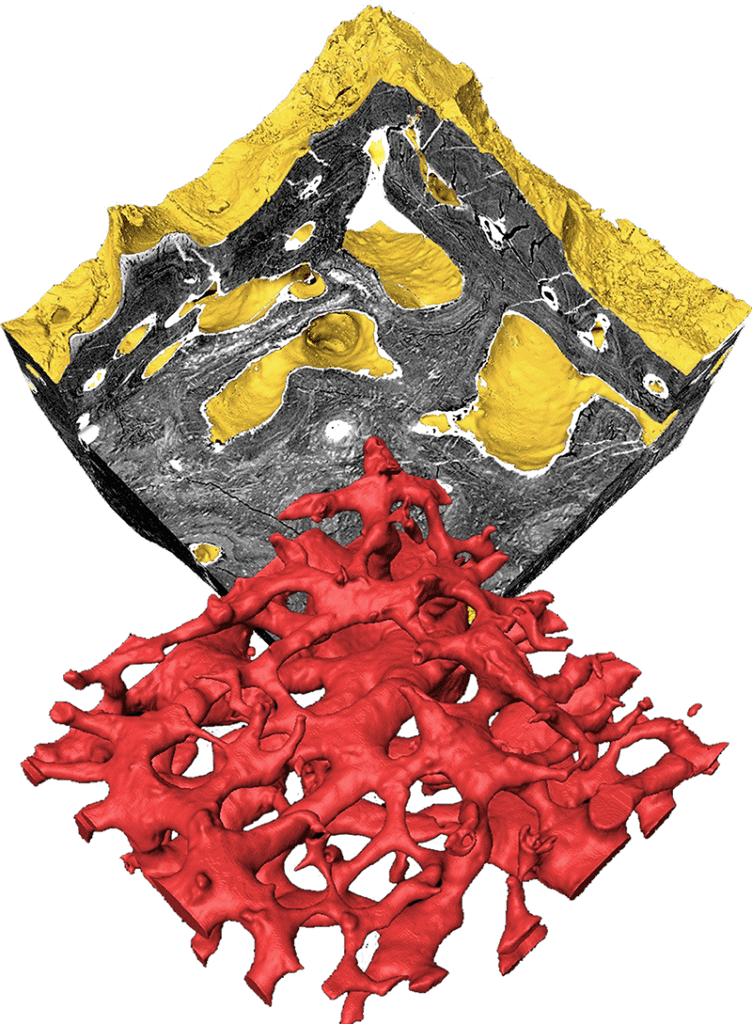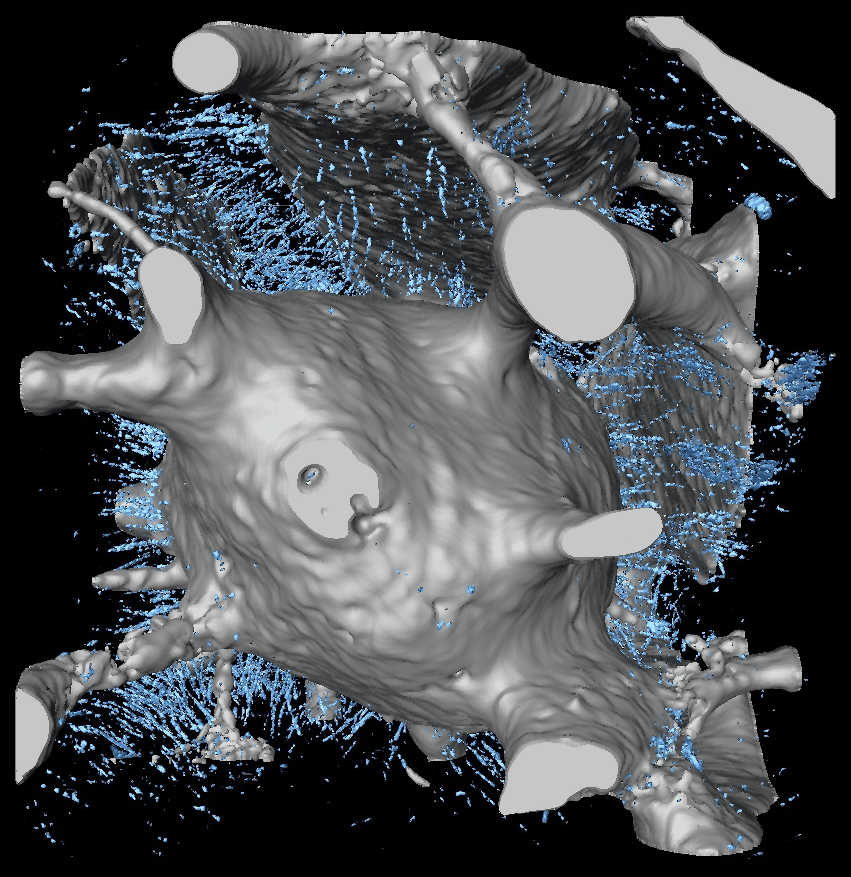
For 160 years, scientists have been debating what tissue types made up the earliest vertebrate skeletons. Now, a new study that used powerful X-rays to peer inside a 400-million-year-old fossilized skeleton has finally cracked this mystery. Researchers concluded that a “spongy” tissue called aspidin was used in the earliest evidence of bone in the fossil record.
The very first bones were dramatically different from our own
Today, the skeletons of vertebrates are built out of four different tissue types. These are bone, cartilage, (a rubber-like padding that covers and protects the ends of long bones at the joints and is a structural component of many body parts), dentine, and enamel. Dentine is the hardest material in the body because of its high inorganic content and low water composition, while enamel is the outermost layer that covers dentine.
These tissues become mineralized as they grow, offering the skeleton strength and rigidity. Millions of years ago, however, there were likely other types of tissue that constructed bones.
To get to the bottom of things, a team of researchers at the University of Manchester, the University of Bristol and the Paul Scherrer Institute in Switzerland examined in excruciating detail the fossils of a group of fish called heterostracans, which lived 400 million years ago. In order to peer inside the ancient skeletons, the researchers employed a special type of CT scan which uses high energy X-rays produced by a particle accelerator. It was all a laborious process, however, which involved scanning different heterostracan species and requiring numerous trips to the Swiss Light Source, Switzerland and over 100 hours of scanning time.

This technique allowed the researchers to discover what kind of tissue heterostracan skeletons are made of. Heterostracans are some of the oldest vertebrates with a mineralized skeleton and by studying them, it is possible to deconstruct what the earliest bones looked like and how they transitioned to their current form.
“When we had collected the data, I began the painstaking process of creating a 3D digital model of aspidin, in order to determine the shape and orientation of the mysterious tubes. Images from previous studies seem to show the tubes branching; resembling the branching processes of bone cell-spaces. However, I found that these tubes were strictly linear, lacking any kind of branching. The images from previous studies seem to be a result of 2-dimensional sectioning through tangled and overlapping tubes, giving the appearance of branching. This discovery was an important piece in the puzzle, allowing me to rule out the possibility that these tubes were bone or dentine cell-spaces,” Dr. Joseph Keating, from Manchester’s School of Earth of Environmental Scientists, told ZME Science.
According to the results, heterostracan skeletons were made of aspidin — a strange tissue, crisscrossed by tiny tubes, which doesn’t even remotely resemble any other tissue found in vertebrates today.

Keating and colleagues conclude that these tiny tubes used to house fiber-bundles of collagen inside them. Collagen is a type of protein found in the skin and bones.
However, heterostracan skeletons bear some important differences when compared to modern vertebrate bones.
“Heterostracan aspidin lacks two key features of bone in most living vertebrates. Firstly, aspidin is acellular: it lacks cell spaces, as our research has revealed. The bone of most modern vertebrates, including humans, contains a network of interconnected spaces housing living cells, called osteocytes, that maintain bone tissue,” Keating said.
“Secondly, The bone of modern vertebrates is constantly restructured via a process called resorption, whereby bone cells called osteoclasts break down the mineralised tissue. New mineralised tissue is then deposited by another type of bone cell called osteoblasts. This ability allows our skeletons to grow dynamically through life. Heterostracan skeletons show some evidence of resorption, but it appears to be much less common than in the skeletons of most living vertebrates.”
“These two features of modern bone evolved later in vertebrate evolution.”
Aspidin was once thought to be the precursor of vertebrate mineralized tissues. These findings published in Nature Ecology and Evolution suggest that aspidin is, in fact, the earliest evidence of bone in the fossil record, changing our view of the evolution of the skeleton.
“Our results suggest that all types of mineralised tissues found in living vertebrates appear simultaneously in the fossil record, around 420 million years ago. This raises two important questions: when did these tissues first evolve? And why do they appear in the fossil record at the same time? One possible explanation is that the sudden appearance of mineralised tissues is due to the evolution of mineralisation, rather than the evolution of the tissues themselves. Bone and dentine may have first evolved as distinct layers of the skin long before vertebrates evolved the genetic pathways necessary for tissue mineralisation. As such, the early history of these tissues may not be preserved in the fossil record, as unmineralised tissues are prone to decay. Alternatively, there may be a missing fossil record of older vertebrates showing earlier stages in the evolution of the skeleton. These may be fossils we are yet to discover, or fossils sitting in museum draws which have not yet been recognized for their significance,” Keating told ZME Science.


